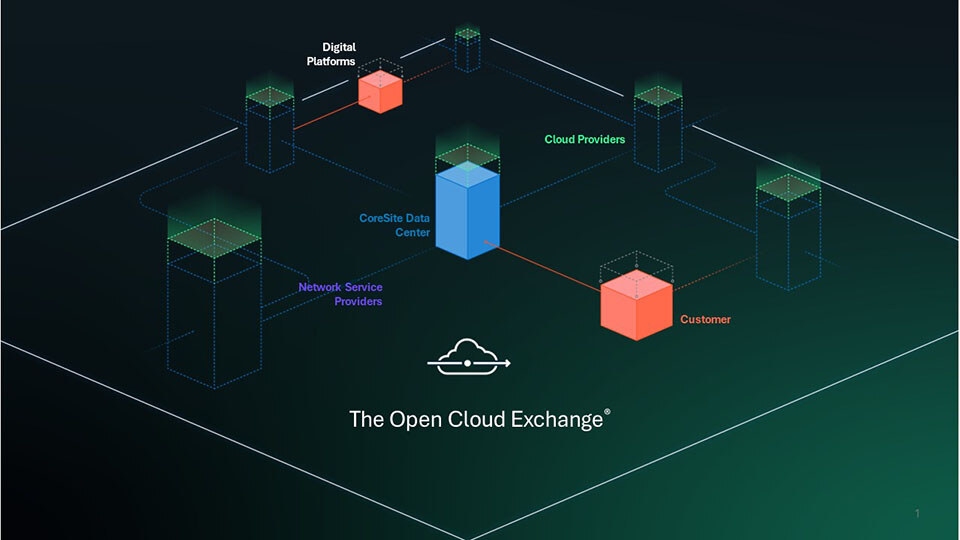
50G-Enabled Virtual Networks Gaining Traction as Organizations Shift Away from Traditional Fixed Networks
Innovation begets invention. It’s fascinating to see what our customers already are doing with the freedom virtualization and software-defined networking create. Network virtualization is a key enabling technology for AI, media streaming, machine learning and so many other data generating use cases. Learn why the fixed networks we have relied on for so long just can't deliver what digital transformation is producing.
Why the Market is Shifting to Virtual Networks with 50G
Organizations are looking beyond traditional, fixed networks for a more flexible and less costly alternative. Until recently, traditional networks have been the only way to get the level of bandwidth that’s needed for moving massive data volumes and supporting data bursting. Consequently, organizations over-spent and over-built traditional networks – that was the only option.
High bandwidth virtualization takes almost all the hardware out of the cost of deployment and supports the data transport capability and network flexibility. Of course, you need a platform to manage the virtual routers, switches, load balancers and other network appliances. The Open Cloud Exchange® is just that, providing software defined networking and automated network services orchestration.
The OCX enables immediate bandwidth “right-sizing,” lowers network spend, delivers a great user experience and opens the door to network simplification. Those advantages extend to hybrid cloud networking. You can provision simultaneous, 50G virtual connectivity to multiple cloud providers through the OCX. We announced that capability in a press release at the end of 2023, which we have linked below.
More than 70% of IT service providers said their organization has already deployed AI or will be deploying AI within one year in each of the following areas: IT and cloud operations, network operations and network planning.1
How Content Streaming is Changing the Market
Data is being generated and consumed at incredible speed. And it’s not just from artificial intelligence (AI), the shiny new object that we see in chatbots, search engines, customer support, R&D and so on.
Let’s not forget about other big data drivers – think about media and entertainment, specifically film rendering and content streaming. How many people watched the Super Bowl on an over-the-top media service? How often do you, your kids or grandkids watch YouTube TV instead of TV channels that rely on cable, digital antenna or satellites?
Live and on-demand streaming are only going to increase. People want content delivered over the device and at the time it’s most convenient, which might be in real-time…or not.
Network providers are leaning in to streaming because they see new revenue opportunities. For example, digital natives consume the bulk of their content via their phones or smart browsers, and they represent a huge addressable market. We call the internet the “World Wide Web” for a reason. Content providers can expand into global markets via the Web with high bandwidth virtualization, on wired and wireless networks.
Nielsen estimates that 123.7 million viewers tuned in for Super Bowl LVIII via the combination of over-the-air and over-the-top (OTT) networks: CBS, Paramount+, Nickelodeon and Univision.2
But big data sharing creates challenges for virtual networks – bandwidth constraints, processing high velocity and variable data formats are two examples. Higher quality data also means larger file sizes. We’re moving from HD to 4K streaming now and 8K is on the horizon. These are challenges that 50G virtualization, and CoreSite data centers, can help solve.
Nearly all cloud service providers (CSPs) support up to 50G. Being able to move data at that rate is important to getting the value enterprises are looking for from cloud services such as AI and delivering the quality of service that consumers expect when streaming.
How Virtual Connectivity Works
To enable software-defined networking, a CoreSite customer sets up a cross connect and then opens a port to our fabric using the OCX. That establishes a virtual local area network (VLAN) connection, leveraging the cross connect. Each CSP also has a cross connect between their CoreSite data center deployment and the OCX. After the two ports are interconnected, standing up virtual circuits is the same process as standing up non-virtual circuits, only a whole lot faster, easier and less expensive.
Customers can scale up 20G and 50G bandwidth in seconds, with just a few clicks in the OCX dashboard. Plus, the single VLAN can replace multiple virtual (and physical) circuits and collapse disparate networks onto a single “pipe.” That reduces complexity and the single-vendor, single-bill experience further simplifies operations.
How the OCX Simplifies Operations

Just about anyone can connect their organization’s colocation deployment to one or more CSPs through the OCX. Minimal engineering skills are required, which can help with resource allocation and cost.
We have talked a lot about 50G and public clouds. Hybrid IT, the norm today, includes on-premises data bases and multiple digital platforms, private clouds in colocation, CDNs, edge devices, and so on. The OCX provides centralized control of on-premises and off-premises virtual networks. Enterprises also can connect their colocation deployments between CoreSite data centers in a campus or across the U.S., which we refer to as inter-market connectivity.
The various departments within an enterprise often have different bandwidth requirements. Day-to-day business processes and financial transactions might need to run at 50G, but database access and middle-of-the-night backups might not. Virtualization creates advantages with the logistics around that as well. Software-controlled dynamic bandwidth allotment makes it easy to adjust for a specific business operation.
The flexibility 50G virtual networks offer, at lower cost than traditional networks, is arguably the most important advantage.
Innovation begets invention. It’s fascinating to see what our customers already are doing with the freedom virtualization and software-defined networking create. 50G virtual networks will push digital transformation further for them and, in turn, catalyze new products, new revenue streams and entirely new types of services.
Know More
CoreSite Enables 50G Multicloud Networking on the Open Cloud Exchange with Enhanced Virtual Connections to Oracle Cloud Infrastructure FastConnect
References
- Artificial Intelligence: Charting the Way Forward for AI: 2022 Survey of IT Leaders and Service Providers on AI Deployment, Heavy Reading, 2022
- Super Bowl LVIII Draws 123.7 Million Average Viewers, Largest TV Audience on Record, Nielsen, 2024










